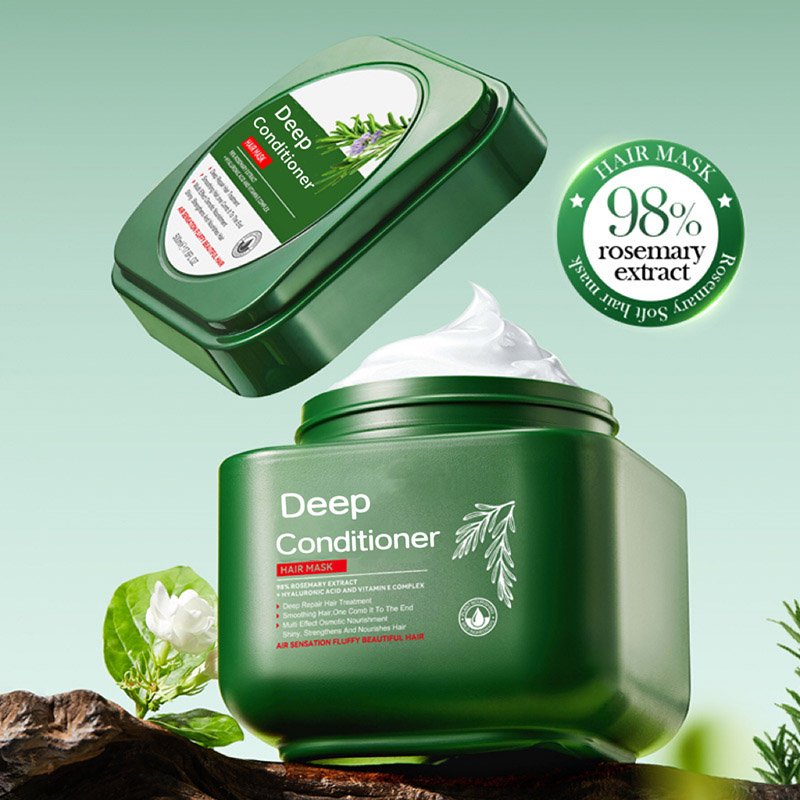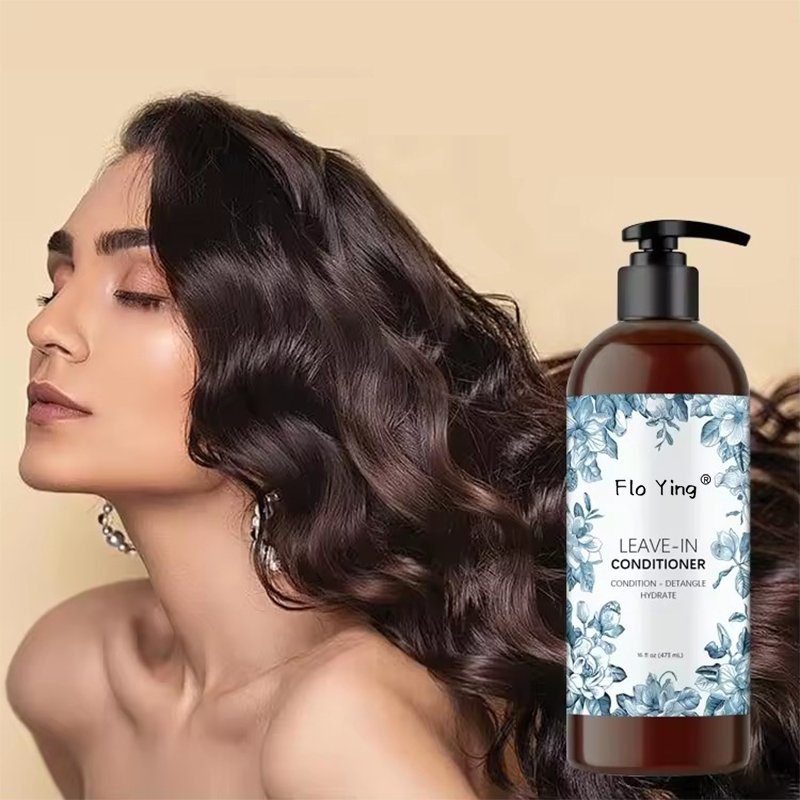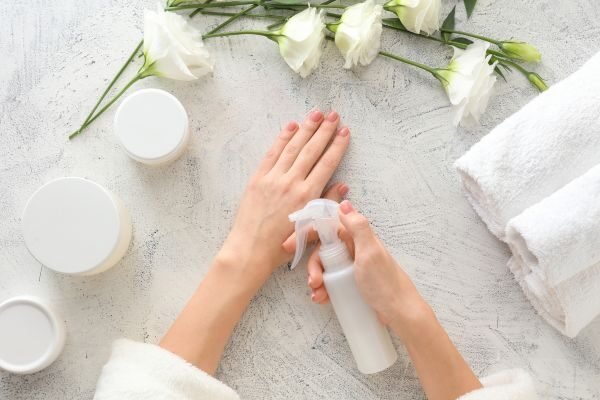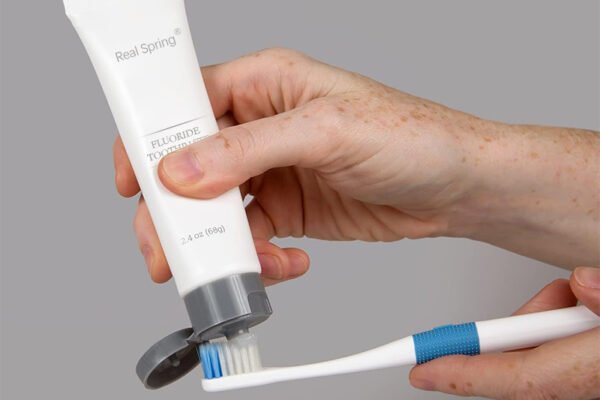Já pegou um condicionador sem enxágue que fez maravilhas para sua amiga, só para deixar seu cabelo sem vida, oleoso ou com aquela aparência de palha? Todas nós já passamos por isso. A verdade é que o cabelo não tem uma fórmula única. O que deixa os cachos com movimento pode afogar os cabelos finos, e o que doma os fios grossos pode não fazer diferença para os cabelos tingidos. Conhecer o seu tipo de cabelo – seja ele fino, grosso, cacheado, crespo, liso, seco, danificado ou tingido – é a grande mudança. É por isso que usar o produto certo condicionador sem enxágue Para o seu tipo específico de cabelo e seus desafios é crucial. É a diferença entre dias de cabelo "meh" e "uau!". Entender a textura, a densidade, a porosidade e as preocupações do seu cabelo é o primeiro passo essencial. Depois, você pode prosseguir para encontrar o produto certo para o cuidado do cabelo que oferece benefícios direcionados sem efeitos colaterais indesejados.

Benefícios do uso de um condicionador de cabelo
- Ele retém a hidratação e sela a umidade nos fios para maciez 24 horas por dia, 7 dias por semana.
- Proporciona controle do frizz e suaviza a cutícula do cabelo para combater a umidade e os fios rebeldes.
- Protege contra secadores e chapinhas. Algumas fórmulas oferecem proteção térmica de até 232 °C!
- Ajuda a desembaraçar nós, especialmente em cabelos cacheados ou crespos.
- Evita o desbotamento em cabelos tingidos selando a haste capilar.
- Define ondas/espirais sem estalar ou ficar pegajoso.
- Aumenta o volume dos cabelos finos na raiz enquanto condiciona as pontas.
- Penetra pontas duplas com proteínas/ceramidas para reparar a fraqueza.
Os condicionadores leave-in são como um multivitamínico diário e um campo de força para o seu cabelo. Eles agem silenciosamente para prevenir os dias ruins antes mesmo que eles comecem. Não é apenas mais um passo na longa lista de coisas que seu cabelo precisa. Enquanto os condicionadores com enxágue funcionam temporariamente, os leave-ins oferecem proteção o dia todo e resolvem problemas específicos que os produtos comuns não conseguem resolver. Este guia acaba com a confusão e mostra exatamente como usar um condicionador leave-in com base no que seu cabelo realmente precisa. Vamos deixar seu cabelo com a melhor aparência possível.
Melhor condicionador sem enxágue para cabelos cacheados
Cabelos cacheados precisam de hidratação e definição para combater o frizz e dar volume. O condicionador leave-in ideal para cabelos cacheados retém a umidade nos cachos sem pesar ou acumular resíduos. Veja como usá-lo:
- Limpeza e preparação: lave com um xampu sem sulfato. Aplique condicionador de enxágue, desembaraçando delicadamente com os dedos ou um pente de dentes largos. Enxágue a maior parte e deixe o cabelo úmido, sem pingar.
- Aplique o Leave-in: Aplique 1 a 2 doses de produto nas mechas com movimentos de oração. Concentre-se no comprimento e pontas (reduzir a aplicação perto da raiz ajuda a evitar a oleosidade). Para cachos mais fechados (3C–4C), espalhe com os dedos para garantir uma cobertura uniforme.
- Modele e seque: Em seguida, aplique um creme ou gel para cachos para fixação. Amasse delicadamente para promover a formação de cachos. Deixe secar naturalmente ou com o difusor em fogo baixo.
Melhores condicionadores sem enxágue para cabelos cacheados:
- Cachos finos/médios (2A–3B): Condicionador sem enxágue contendo suco de aloe vera, proteína de trigo hidrolisada ou aminoácidos.
- Cachos grossos/enrolados (3C–4C): Condicionadores ricos em manteiga de karité, óleo de coco, óleo de jojoba ou néctar de agave.
- Cachos com tendência a frizz: fórmulas ricas em proteínas com pH de 4,5 a 5,5 (por exemplo, proteína de quinoa hidrolisada, extrato de raiz de marshmallow, poliquatérnio-7 ou extrato de semente de girassol).
O QUE FAZER ✅ | NÃO FAÇA ❌ |
1. Use no cabelo úmido para uma distribuição uniforme | Recomendamos evitar manteigas ou óleos pesados se você tiver cachos finos |
2. Refresque os cachos de um dia com água + um pouquinho de leave-in | Sulfatos ou álcoois secantes não são aconselháveis em sua rotina |
3. Hidrate profundamente os cabelos semanalmente. Os cachos perdem umidade rapidamente. | Tente evitar tocar nos cachos enquanto seca (causa frizz) |
Dica profissional: Para cachos definidos, aplique leave-in em algumas mechas antes de modelar. Menos produto = mais movimento. | |

Melhor condicionador sem enxágue para cabelos finos
Cabelos finos precisam de hidratação leve. Muito produto ou ingredientes pesados podem deixá-los sem vida, oleosos ou com fios finos rapidamente. Seu objetivo aqui é aumentar a hidratação e o brilho sem sacrificar o volume. Veja como fazer isso:
- Limpeza e preparação: Use um xampu volumizador. Evite condicionadores pesados com enxágue (ou aplique apenas nas pontas). Retire o excesso de água. Seu cabelo deve estar úmido, não encharcado.
- Aplique leave-in: Fórmulas em spray ou leite funcionam melhor. Use apenas 1 pump ou 2 borrifadas no máximo. Aplique apenas do comprimento às pontas (minimize a aplicação perto da raiz). Penteie com um pente de dentes largos para uma distribuição uniforme.
- Modele e seque: Em seguida, aplique uma mousse leve ou spray texturizador na raiz. Seque com secador de cabeça para baixo para dar volume ou deixe secar naturalmente com o cabelo preso no topo da cabeça.
O melhor condicionador sem enxágue para cabelos finos contém ácido hialurônico, esqualeno, proteína hidrolisada de arroz ou levedura, pantenol ou aloe vera.
O QUE FAZER ✅ | NÃO FAÇA ❌ |
1. Aplique sempre nos cabelos úmidos. A aplicação a seco pode causar grumos. | Considere evitar cremes, manteigas ou óleos (eles costumam ser muito pesados) |
2. Use uma vez a cada 2-3 lavagens (cabelos finos precisam de menos condicionador) | É melhor evitar aplicar perto das raízes ou do couro cabeludo |
3. Esclareça mensalmente para ajudar a prevenir o acúmulo | Tente limitar o uso excessivo. Limite-se a uma quantidade do tamanho de uma ervilha por seção. |
Dica profissional: Misture 1 dose de leave-in com água em um borrifador para obter uma refrescância ultraleve entre as lavagens. | |

Melhor condicionador sem enxágue para cabelos secos
Cabelos secos e quebradiços precisam de hidratação intensa, mas produtos pesados podem deixá-los sem vida ou oleosos. Aqui está o seu plano para manter a hidratação e reparar os danos:
- Limpeza e preparação: lave com um xampu hidratante sem sulfato. Aplique um condicionador hidratante com enxágue. Enxágue levemente e deixe o cabelo 80% úmido (sem pingar).
- Aplique o Leave-in: Use uma fórmula em creme ou manteiga. Aqueça de 1 a 2 doses entre as palmas das mãos. Divida o cabelo em mechas. Aplique do comprimento às pontas com as mãos em oração e penteie. Para pontas extremamente secas, você pode aplicar um pouco mais apenas nas pontas.
- Selar e proteger: reter a umidade com 2 gotas de óleo de argan nas pontas. Use protetor térmico ao modelar. Seque ao natural ou com difusor em fogo baixo.
Principais ingredientes do condicionador leave-in para cabelos secos:
- Reparação Intensa: Biotina, queratina hidrolisada, vitamina B5 ou bis-aminopropil dimeticona.
- Natural/Enovelado: Manteiga de karité, óleo de coco, extrato de chá ou raiz de marshmallow.
- Cabelos finos a médios secos: leite de arroz, óleo de rosa mosqueta ou óleos de sementes (erva-doce, abóbora, cominho ou semente de uva).
O QUE FAZER ✅ | NÃO FAÇA ❌ |
1. Aplique nos cabelos úmidos para reter a água | Sprays à base de álcool não são recomendados |
2. Use 2 a 3 vezes por semana para manutenção | Tente não pular o protetor térmico antes de usar ferramentas quentes |
3. Durma em fronhas de seda/cetim para reduzir a perda de umidade | Seque o cabelo delicadamente, em vez de esfregar (para minimizar a quebra) |
Dica profissional: Para ressecamento grave, misture o leave-in com uma máscara capilar reparadora. Aplique como tratamento noturno sob uma touca de banho. No inverno, use uma camada de óleo/manteiga. | |

Melhor condicionador sem enxágue para cabelos ondulados
- Limpeza e preparação: Use um xampu suave e volumizador. Aplique um condicionador leve com enxágue apenas nas pontas. Enxágue bem; recomenda-se a aplicação do condicionador leave-in em cabelos úmidos, mas sem pingar.
- Aplique o Leave-in: Opte por um creme leve, leite ou spray. Use 1 pump ou 3 borrifadas no máximo. Vire o cabelo para baixo. Aplique com as mãos em oração, das orelhas até as pontas. Amasse suavemente para cima para incentivar a formação de cachos.
- Modele e seque: Em seguida, aplique um spray de sal marinho ou uma espuma leve para fixação. Aplique o microplop com uma camiseta de algodão (amasse para remover o excesso de água). Seque ao ar livre ou com difusor em temperatura baixa + velocidade baixa para preservar o padrão ondulado.
| O QUE FAZER ✅ | NÃO FAÇA ❌ |
| 1. Aplique nos cabelos molhados para uma distribuição uniforme | Manteiga ou óleos pesados, pois podem achatar as ondas |
| 2. Esprema a água após aplicar o leave-in para fixar as ondas | Aplicar perto da raiz pode reduzir o volume do cabelo |
| 3. Refresque o dia 2–3 ondas com as mãos úmidas + 1 borrifada de leave-in | Pentear ou escovar cabelos secos pode deixá-los ainda mais crespos |
| Dica profissional: Para uma definição extra, aplique 1 gota de óleo leve nas ondas após o leave-in. | |

Melhor condicionador sem enxágue para cabelos crespos
O frizz não é apenas irritante. É um sinal de que seu cabelo está sedento, danificado ou com problemas de umidade. O condicionador sem enxágue certo age como um escudo, alisando a cutícula capilar e retendo a umidade, mantendo os fios rebeldes afastados. Veja como usar um condicionador sem enxágue para cabelos crespos e obter cabelos flexíveis, macios e duradouros:
- Limpeza e preparação: use um xampu hidratante sem sulfato. Aplique um enxágue suavizante ou condicionador profundo. Enxágue com água fria para selar as cutículas. Seque o cabelo, deixando-o levemente úmido.
- Aplique o Leave-in: Escolha uma fórmula à base de creme ou sérum (evite sprays, pois podem piorar o frizz). Use 1 dose para cabelos finos e 2 doses para cabelos grossos. Aplique com as mãos em oração, da raiz às pontas (sim, da raiz também, mas com moderação). Penteie com um pente de dentes largos e amasse delicadamente.
- Fixe: Em seguida, aplique 2 a 3 gotas de óleo de argan ou marula nas pontas. Seque com difusor em temperatura baixa ou deixe secar naturalmente, formando uma trança/plop solto.
Os melhores condicionadores sem enxágue para cabelos crespos contêm extrato de semente de girassol, queratina, proteína de baobá, raízes de olmo escorregadio e marshmallow, vitamina E e proteína do leite.
O QUE FAZER ✅ | NÃO FAÇA ❌ |
1. Aplique nos cabelos úmidos. Dilua com água, se necessário. | Sulfatos, álcoois ou sprays de sal podem ressecar o cabelo |
2. Use ar frio ao secar para selar a cutícula | Esfregar o cabelo com toalhas pode causar frizz) |
3. Durma em fronhas de seda/cetim (o algodão rouba a umidade) | Sobrecarga de produto (menos é mais para suavidade). |
Dica profissional: Para cabelos com frizz persistente, aplique leave-in antes de enxaguar o condicionador. Este método "pré-poo" aumenta a absorção. | |

Precauções e erros comuns de uso
Embora os condicionadores sem enxágue façam maravilhas, erros podem deixar os cabelos sem vida, irritados ou com acúmulo de resíduos. Aqui estão alguns erros comuns a serem evitados e suas soluções rápidas:
- Aplicação em excesso: deixa o cabelo oleoso e pesado. Em vez disso, use uma quantidade do tamanho de uma ervilha (para cabelos finos) ou uma quantidade do tamanho de uma noz (para cabelos grossos/crespos) em cada mecha.
- Aplicação na raiz: Causa achatamento/acúmulo de resíduos no couro cabeludo. Para corrigir, concentre-se apenas do comprimento às pontas.
- Uso em cabelos secos: dificulta a distribuição e deixa espaço para resíduos. Recomenda-se aplicá-lo em cabelos úmidos.
Precauções Principais
- Teste novos produtos em pequenas áreas (no couro cabeludo ou pescoço) por 24 horas.
- Evite fórmulas com sulfatos, álcoois secantes ou silicones (dimeticona é aceitável se seu cabelo não for de baixa porosidade).
- Cabelo fino? Evite manteigas pesadas; prefira sprays/leites.
- Colorida? Procure proteção UV/térmica.
- Regra de ouro: comece com menos produto (você sempre pode adicionar mais). Na dúvida: menos é mais.
Efeitos colaterais e riscos
Fazendo isso | Leva a |
1. Acúmulo de pelos no couro cabeludo/folículos obstruídos | Afinamento, coceira |
2. Sobrecarga de proteína (de fórmulas ricas em proteínas) | Cabelo quebradiço |
3. Reações alérgicas | Vermelhidão, descamação (verifique se há alergia a coco/babosa) |
Conclusão
Encontrar o condicionador leave-in perfeito para cabelos danificados não é hora de seguir tendências ou as recomendações mais populares de influenciadores. Você precisa respeitar as necessidades do seu cabelo. Sejam cabelos finos, cacheados, crespos, ondulados ou secos, combine a fórmula e a técnica com a sua textura. Lembre-se:
- Cabelos finos prosperam com sprays/leites leves aplicados somente nas pontas.
- Cabelos cacheados/crespos pedem cremes/manteigas ricos em fios molhados.
- O uso excessivo sabota os resultados. Comece aos poucos.
- A aplicação no cabelo úmido garante uma distribuição uniforme.
Seu tipo de cabelo é o roteiro que você procurava, e aquele produto único que funciona para todos os tipos de cabelo não vai te ajudar em nada. Agora que você sabe como usar o condicionador sem enxágue corretamente, experimente com confiança. Seu cabelo mais saudável e vibrante pode começar hoje mesmo.
Perguntas frequentes
Que tipo de cabelo deve usar um condicionador leave-in?
Todos os tipos de cabelo se beneficiam de condicionadores sem enxágue. Cabelos finos precisam de hidratação leve, cabelos cacheados/crespos requerem hidratação intensa, cabelos secos/danificados buscam reparação e cabelos crespos anseiam por alisamento.
Quem não deve usar condicionador sem enxágue?
Tricologistas recomendam evitar o uso de condicionadores sem enxágue se você tiver couro cabeludo oleoso, problemas no couro cabeludo (como eczema ou psoríase) ou cabelos com porosidade muito baixa e propensos ao acúmulo de resíduos. Nesses casos, teste em uma pequena área antes de usar.
O condicionador leave-in é somente para cabelos longos?
Não, o condicionador leave-in não é só para cabelos longos. Cabelos curtos também precisam de hidratação/proteção. Basta ajustar a quantidade: tamanho ervilha para cortes pixie e tamanho cereja para comprimento acima dos ombros.
Você escova os cabelos depois do leave-in?
Você pode escovar os cabelos após usar um condicionador sem enxágue, mas apenas com um pente de dentes largos e cabelos úmidos. Escovar os cabelos secos causa quebra/frizz.







